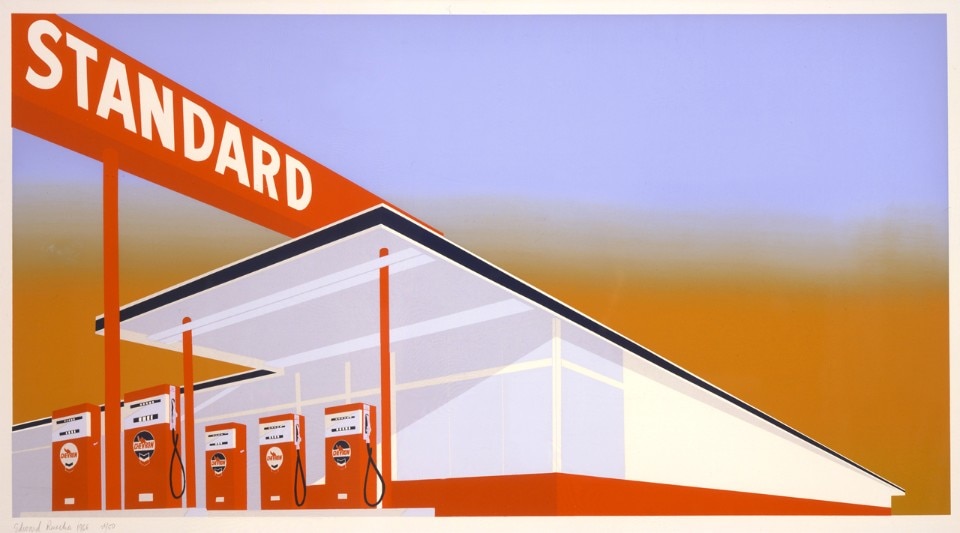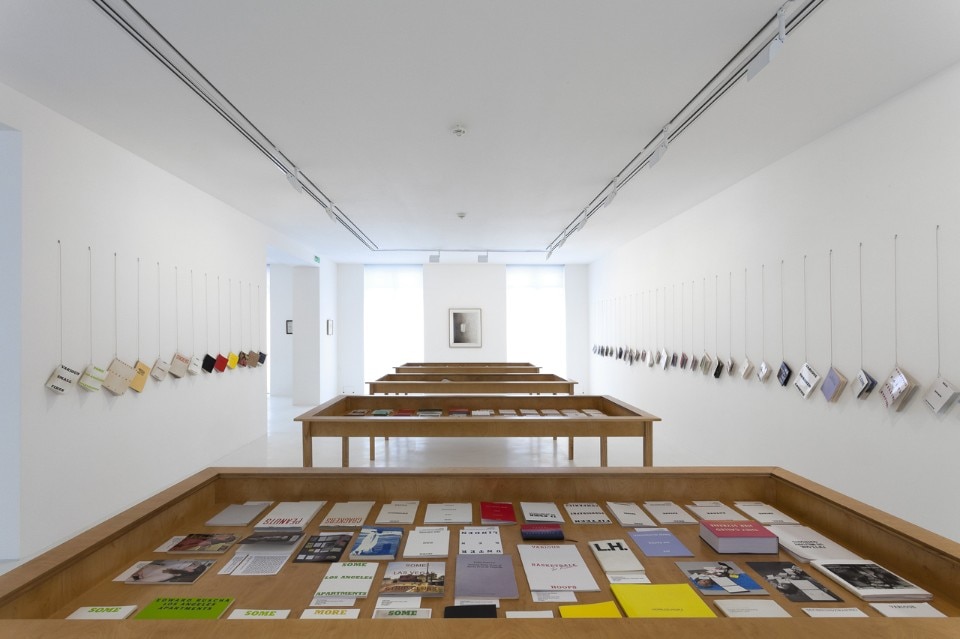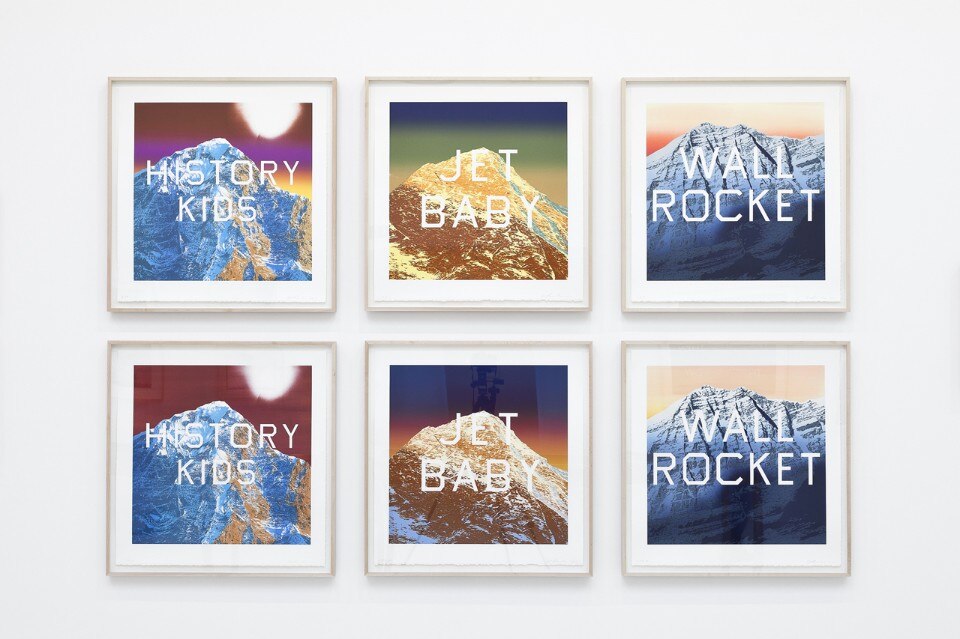
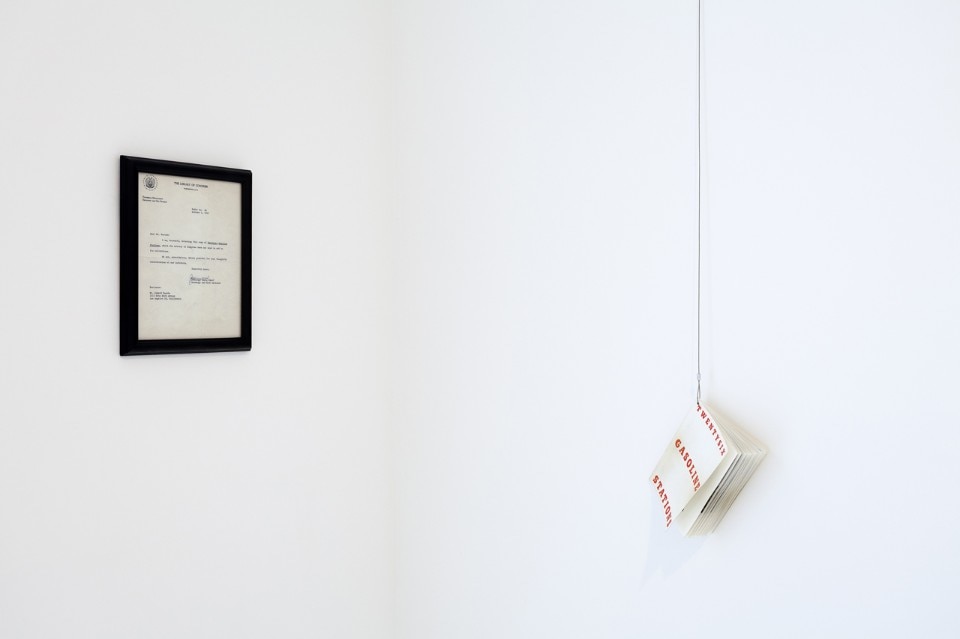
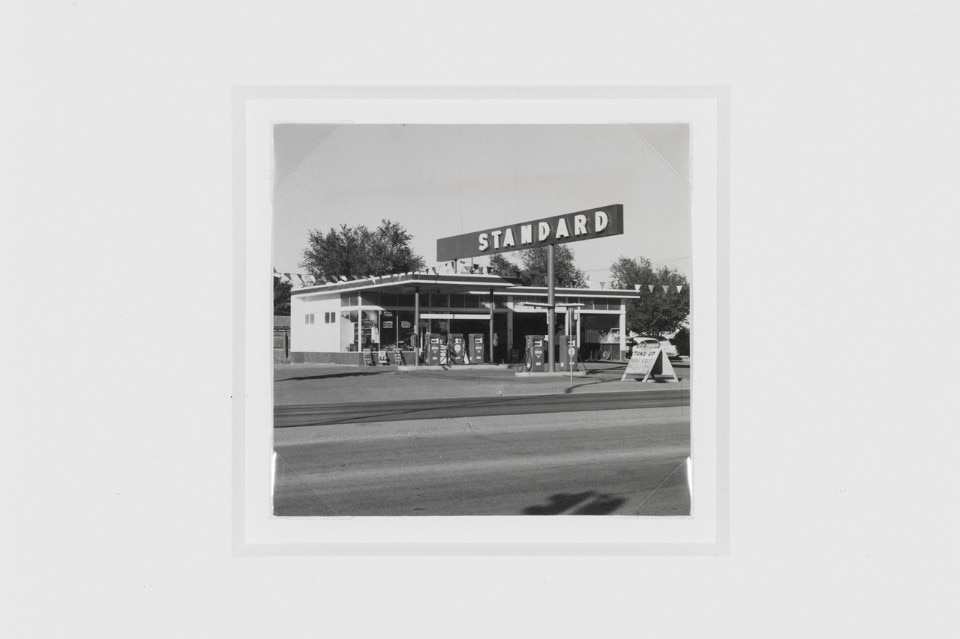
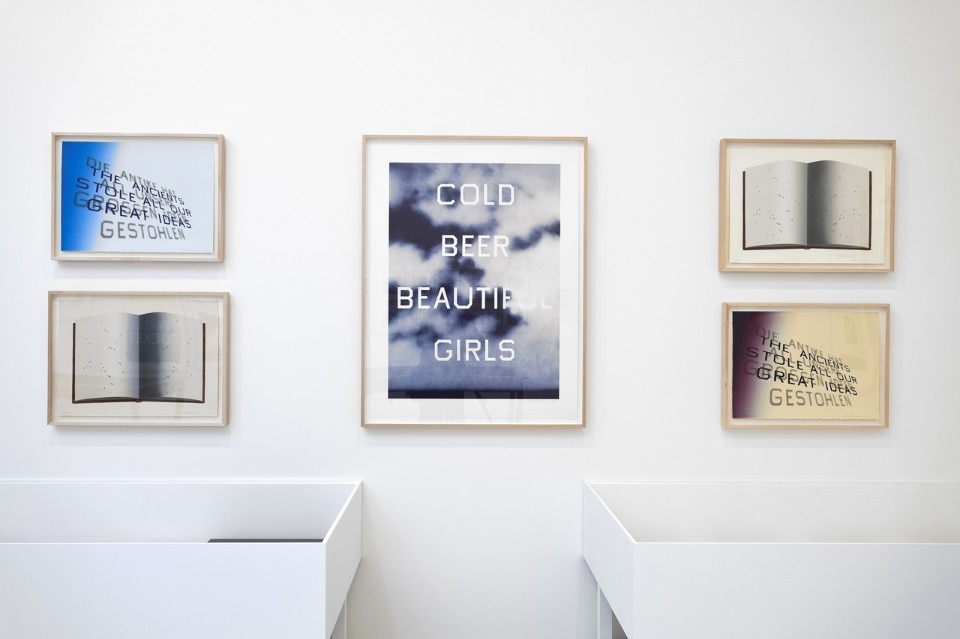
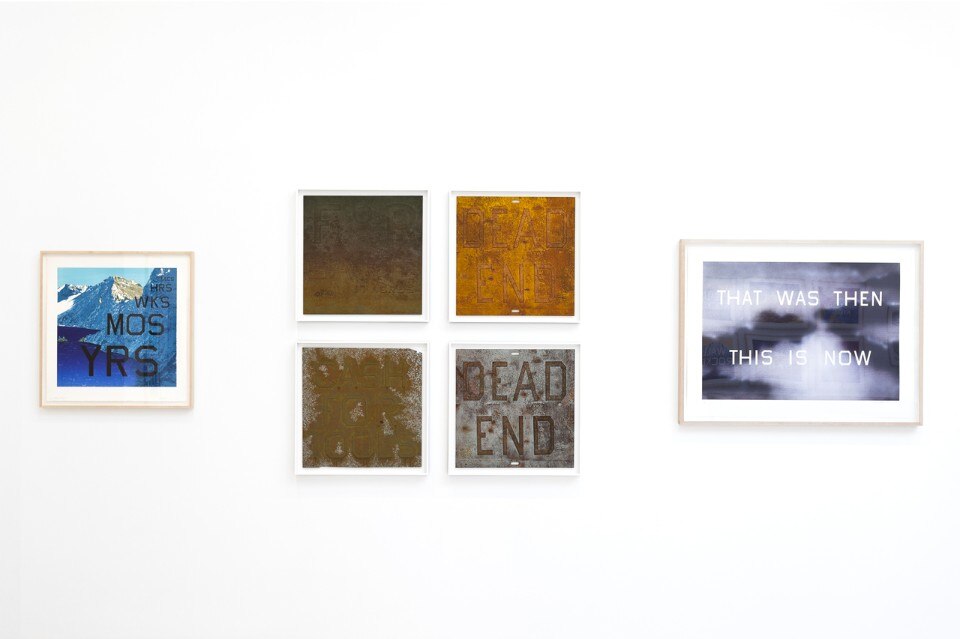
Bruce Nauman actually burned Small Various Fires, giving it a new story, but the fresh documentation generated a new performance, a film of Jonathan Monk’s Small Fires Burning (After Ed Ruscha After Bruce Nauman After) (2002). Jonathan Monk reiterates Nauman’s action in a film 16mm that becomes a d’après and tribute to both artists.
This constant re-enactment can only prompt reflection on a work’s value: the three dollar price at the start of the Ruscha era was then fuelled by assisted readymades and rose to 1600 dollars when it materialised in a facsimile of a poster with a Zippo lighter, page 4 in the original book.
